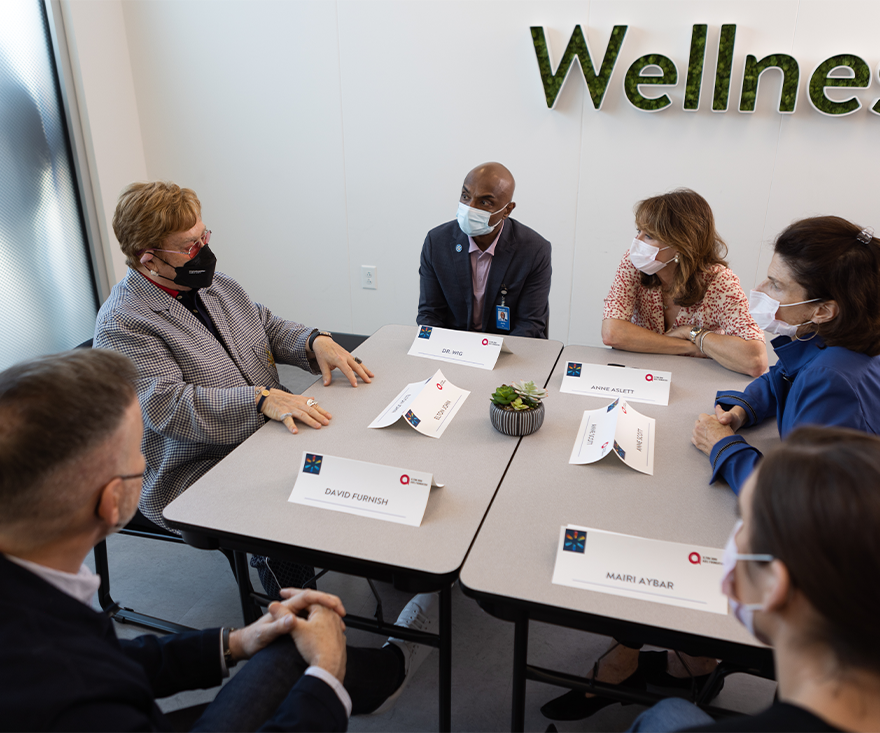Thursday, Dec. 1, marks the 34th annual World AIDS Day. While it’s a moment to celebrate the advances in science and treatment for those living with or at risk of HIV, we must not be complacent. The reality is that 9.7 million people still do not have access to lifesaving HIV care — including more than 400,000 people in the United States. Addressing such a disparity requires testing and treatment in communities that need it most — but in order to reach them, we must collaborate to harness technology, innovative financing, and embrace the reality that vulnerable, marginalised communities are being left behind.
First, let’s look back and acknowledge how far we’ve come. When the Elton John AIDS Foundation was founded, effective treatment was nowhere in sight. Life expectancy post-HIV diagnosis was roughly two years. Marginalization and shaming of people infected with the disease, driven by fear and fuelled by misinformation, saw people living with HIV scapegoated and ostracized.
Gains in the HIV epidemic have been astounding, as HIV treatment programs have expanded across the world with astonishing results, offering those on medication a normal life expectancy. Yet HIV perhaps more than any other disease is still thriving on persistent stigma and discrimination. People who are more vulnerable to HIV — the LGBTQ+ community, people who sell sex or use drugs, and young people who lack the information or agency to protect themselves — today form roughly 62% of new HIV infections.
These vulnerable groups are afraid to identify themselves as at risk, and this is something we see in high, middle- and low-income countries alike. Global LGBTQ+ and People Living with HIV movements have successfully challenged this environment in many places, but their human rights and social inclusion are fragile — over 60 countries and territories still criminalize consensual same sex, for example. In 2020, several US States proposed more anti-trans legislation than in the whole of the previous decade.
These alarming statistics continue to drive the Foundation’s motto: No one is left behind. In order to make that goal a reality, we must prioritize reaching those hardest hit communities in new and innovative ways and recognise that HIV and other diseases are the result, not the cause, of their vulnerability.
The Power of Collaboration
Over the last decade, the UK has had an intractable rate of approximately 5,000 new HIV infections annually. To tackle this, the Foundation took a multi-pronged approach by establishing the world’s first social impact bond for HIV. We collaborated with UK hospitals and doctors’ clinics to expand HIV opt-out testing, followed by convening a national HIV Commission to establish how critical these initiatives would be in ending the UK’s HIV epidemic. What we found was that HIV infection was critically undetected and untreated in fragile and marginalised communities, particularly amongst black and ethnic minorities. So compelling were the results of the social impact bond, and so effective was our advocacy in this space that the UK government recently pledged £20 million ($24 million US) to expand opt-out testing across England over the next three years.
In the U.S., we have partnered with Walmart to reduce high HIV rates in the South — an area where inequity, stigma, and lack of resources keep people away from the treatment and services they need. With nearly 90% of the US population living within 10 miles of a Walmart, we are making HIV services more accessible, affordable, and compassionately delivered in communities that need it most.
AIDS is the number one killer of young people in sub–Saharan Africa. We are bringing services to youth in Africa in a way that resonates most with them — their cell phones. We’re currently funding Triggerise’s In Their Hands, a ground-breaking service in Kenya which integrates mental health services into HIV and sexual and reproductive health care via an easy-to-use, youth-centric platform where both the message and the medium fits with how young people engage with the world, and connects them to clinics.
Ultimately, taking advantage of the unprecedented advances in fighting the disease of HIV will require, to use our motto, that no one gets left behind in this progress. We have the tools to address HIV. We have to recognise that in a deeply unequal world, ensuring the most vulnerable are prioritised is not only the right thing to do, when it comes to infectious diseases, it is also the smart thing to do. Communities will access the tools they need to keep them safe if collectively we show the empathy and pragmatism to change laws and attitudes that treat some groups as unequal or undeserving of those tools. HIV is not a death sentence, unless you are excluded from the medicine that treats it.
If we don’t act now, we could be facing a fresh tidal wave of HIV and AIDS — particularly amongst young people. Let’s not sleepwalk into this by thinking AIDS is over. On this World AIDS Day, let’s recommit to working together to ensure everyone can collaborate and innovate to reach the most vulnerable in our communities.
